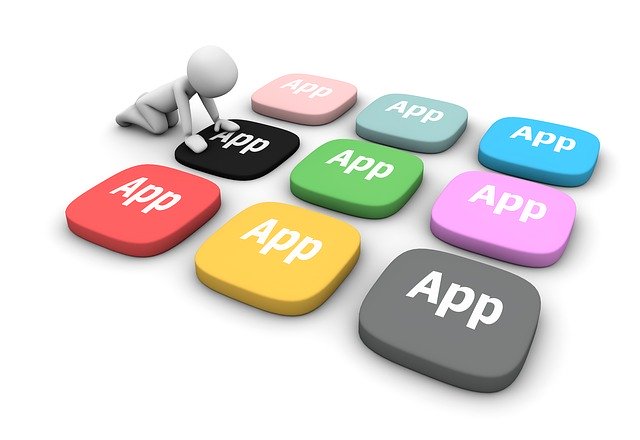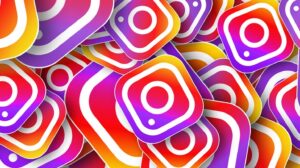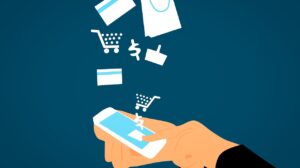Mobile apps have changed our lives. There are some incredible apps out there that perform critical functions and even ones that just help us connect to one another on a daily basis. There have also been some massive flops that range from useless-but-amusing, to downright offensive and dangerous.
We’ll look at some of the top 10 flops in the mobile app industry and more while drawing lessons from each one. We’ve looked at apps themselves, app campaigns, ASO and social media to give you the best flops we’ve seen!
10. Snapchat
To generate buzz around an important announcement, Snapchat created a mysterious countdown timer. The only problem was that users quickly realized that by changing the time on their device, the timer would be tricked into revealing the big secret. The cat was out the bag pretty early on, killing the buzz around the whole campaign.
Oh, the secret that was being kept from users? A collaboration with artist Jeff Koons. Kind of cool.
Key takeaway: Users are smart. There are few things that people like more than out-teching a mobile app. Take this into account when crafting campaigns, and always have a back-up plan in place (imagine if the “spoiler” that people thought was the surprise turned out to be the wrong answer!).
9. Burger King
What started off as an innocent campaign, soon became a massive marketing fail. Burger King released a TV ad that was designed to activate Google Home smart speakers and Android devices. In what seemed like a smart idea at the time, the ad would get the devices to read out the delicious ingredients of the Whopper, information that was sourced from Wikipedia.
Unfortunately, as often happens with crowdsourced campaigns, the Wikipedia page was edited and mobile phones and speakers would respond to the ad with “worst hamburger product” and other off-color phrases.
To make matters worse, it came out that Burger King themselves had edited the Wikipedia page to be more positive about the brand, raising even more backlash.
Key takeaway: if you’re going to give up some aspect of control over your campaign (for example, by referencing Wikipedia or even by launching a hashtag) make sure you know the risks. Many brands are desperate for a Wikipedia page, only to have unflattering content posted to the page. Monitor the campaign constantly, and be ready to bring it to an end if things look like they’re going sour.
8. Nesquik
#NationalBunnyEarsDay. You’ve heard of it, right? Of course not. No one knows quite what Nesquik was thinking when they launched this campaign tied into a Bunny-fier mobile app that gave users Nesquik bunny ears. Take a guess of how many mentions they got on Twitter. That’s right, 9. N-i-n-e.
Key takeaway: Never launch a campaign into nothingness. Just creating a “day” or even a hashtag is no substitute for intense research and a marketing strategy that guarantees the highest chance of success from the get-go. Think of the hours and costs that went into creating the mobile app, the approvals, and the changes. Even worse than not making an impression at all? It turned into an embarrassing mistake. Any campaign should be multifaceted, with each element complementing the overall campaign goals. This is where a good mobile marketing agency comes in, who can help your brand create a holistic, successful campaign. An agency has additional advantages and experience with what works, best practices, and providing top ASO tools, so your campaign is successful.
7. Drop
Like many entries on this list, this one started with good intentions. You can actually imagine yourself in the room with the app creators, as they strategize around how to create buzz for their app and make it stand out.
“Creator One”: Let’s do something crazy.
“Creator Two”: Ok, what you got?
“Creator One”: Let’s dress a horse as a unicorn and walk around New York City with it.
“Creator Two”: Let’s do it!
Well, they actually did do it. Unfortunately, they chose a cold rainy day and a horse that looked really sad.
It was called “the saddest thing you’ll see in New York City”, and we still get sad looking at it.
Drop, the app that created the campaign is actually a really cool app that lets you earn cash rewards from your favorite brands. They’ve gone on to raise millions in funding, so this campaign was thankfully just a blip on their path to success. But it could have been a lot worse.
Key takeaway: Don’t feel pressured to launch a campaign by some self-imposed deadline. If the time isn’t right, wait it out. Also, when it comes to viral campaigns, keep in mind who your target audience is. In this case, it wasn’t the thousands of New Yorkers who actually saw the sad unicorn, but rather the millions of people that saw the ad on social media.
6. Facebook
After a devastating hurricane in Puerto Rico, Facebook decided to show off the aid that Facebook was providing for the country by having Mark Zuckerberg take a VR tour through the disaster.
The impression left on most people who saw this was one of a big brand shamelessly taking advantage of a natural disaster to highlight a new feature, and sparked huge disappointment.
Key takeaway: It’s an incredible thing if you are able to provide assistance at a time of emergency. But, when highlighting the work that you do, make sure it’s in good taste and isn’t seen as taking advantage of someone else’s pain. We’ve seen brands stupidly ride on hashtags created around natural disasters, just stay away. If you can help – awesome. If not, don’t try to get brand mileage out of it.
5. Scanner App
Many scanner apps and “phone cleaner” apps provide basic functionality and then really take advantage of the user. For example, it was discovered that many apps that ostensibly cleaned your phone actually harvested and sold user data. You can imagine how quickly these apps went from “hit” to “flop”.
Key takeaway: Users put a lot of trust in you, and it’s important to repay that trust. One slipup, and you can find yourself quickly overtaken by competitors in a highly contested app market.
4. Snapchat (again)
Sometimes you just have to shake your head and ask yourself, “What were they thinking?”. In a massive fail, Snapchat launched a campaign titled (and we kid you not): “Would you rather slap Rihanna or punch Chris Brown” – seemingly completely insensitive to the alleged 2009 incident where Brown punched Rihanna.
This had obviously got through a number of approvals as it had smooth graphics and creative work behind it. Rihanna responded with an angry social media post and Snapchat apologized. But the whole incident created significant damage to the brand’s name.
Key takeaway: Read things through, it’s as simple as that. With the modern flow of social posts that are real-time and unedited, you still have to keep a steady hand on the rudder of your brand. Someone responsible, who understands the brand, should approve every creative that goes out.
3. QR Code Reader
The “free” QR Code Reader app. Sounds great, right? Well, it was found that the app would charge users a $156 annual subscription, often without the user being aware of it. Even so, $156 for some relatively basic functionality? Not cool.
Key takeaway: Be upfront, open and honest with your users. If something is going to cost, tell them. If you need permission for something specific, ask. Don’t over-promise and then leave disappointment in your wake. It’s fine to hype something up, to create buzz and excitement, just make sure expectations are set from the start.
2. South Australia’s Emergency App Failure
There’s one thing an app needs to do before anything else – and that’s work. Especially when it comes to saving lives. The Alert SA app provided by the South Australian government was made to alert citizens in cases of dangerous fire conditions, especially during hot, dry summers.
Well, during one of the hotter weekends with high chances of a fire outbreak, the app failed to work. The consequences could have been extremely severe, and it’s almost a miracle that a huge disaster didn’t occur and lives weren’t lost.
Needless to say, the government ended their contract with the app provider (who had said they would provide 99.9% reliability).
Key takeaway: When it comes to anything related to people’s lives or critical infrastructure, make sure your app “does what it says on the box”. The bells and whistles can come later.
1. Walkers Selfie Mishap
Drumroll, please! And the #1 mobile campaign flop goes to… Walkers, a UK-based snack brand. What seemed like a great idea to get its brand name out, turned into a PR nightmare. Walkers launched a social media campaign that let people submit a selfie on social media for the chance to win tickets to a sporting event.
Remember what we said about users being smart? Well, they don’t always think “what would be best for the brand?”. Unfortunately, people got sneaky and thought it would be funny to post pictures of criminals, dictators, and serial killers. Needless to say, due to Walkers’ nonexistent auditing process before publishing the photos, they got some press, but it was far from positive.
Key takeaway: Think things through, especially when running a campaign that’s open to everyone to partake in – people that like your brand and ones that don’t. Have a strong auditing process in place to prevent offensive and embarrassing submissions that can tarnish your brand name.
Be Better
Although these are our top 10 flops, there have been many more campaigns and apps that have been far less successful than they could – or should – have been. Hopefully, we can all learn from these and ensure we don’t repeat these mistakes ourselves.





